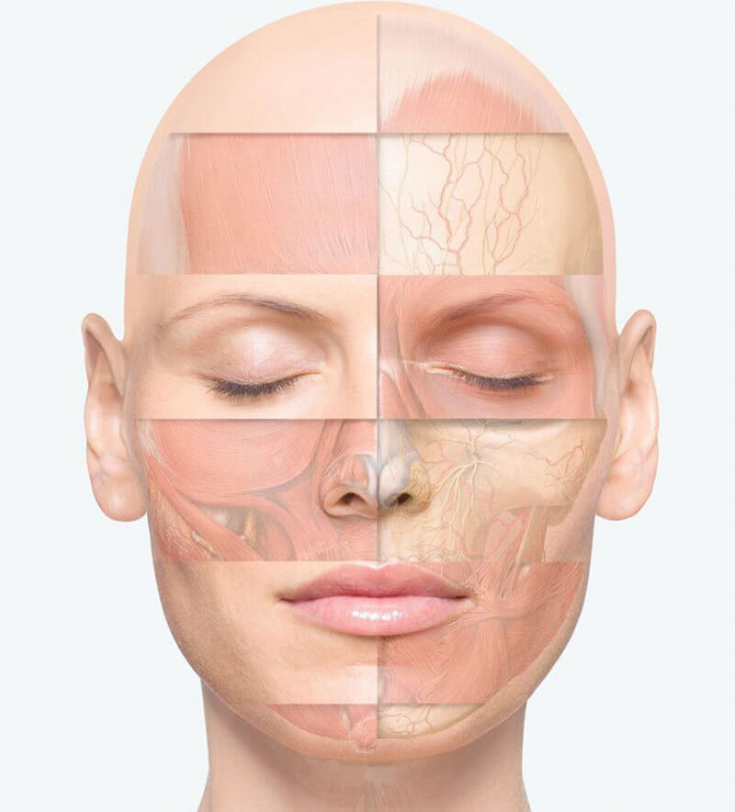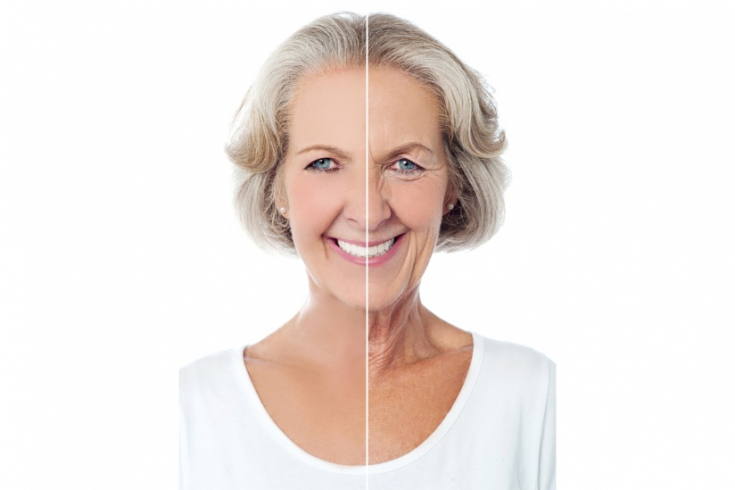The aging of facial skin in women – the process is natural and, in principle, predictable. Despite the main causes and signs of aging that are typical for almost every woman, they all age differently. It is by these features of facial skin aging that the morphotypes of facial aging in women are determined, namely: tired morphotype, deformation morphotype, wrinkled morphotype and mixed morphotype.
What characterizes each of these morphotypes and how to determine yours - read the article estet-portal.com.
- Characteristics of facial aging morphotypes in women
- The main signs of age-related changes in each of the morphotypes
- Aging morphotypes: care recommendations
Characteristics of facial aging morphotypes in women
To understand this issue, it is necessary to determine the criteria for evaluating the skin.
Subscribe to our page on Facebook!

Skin assessment includes:
- General characteristics of the skin (color, tone, hydration, thickness);
- Presence of deformities (sagging cheeks, change in shape, uneven facial contour);
- Presence of wrinkles, folds, furrows and their characteristics;
- Skin photoaging.
Subscribe to our page on Instagram!
#opros#
Based on these criteria, it is possible to distinguish 4 morphotypes of age-related changes in the skin of the face in women: tired, deformed, wrinkled and mixed morphotypes.
The main signs of age-related changes in each of the morphotypes
With tired morphotype, severe swelling of the face is noted. The reason is a violation of lymphatic drainage, a decrease in the tone of mimic muscles and turgor. The skin of the bucco-zygomatic region has the least elasticity: folds and nasopharyngeal furrows appear, "puppet" wrinkles, which, together with the lowered corners of the eyes and lips, create an exhausted and tired look. Photoaging is noted only in the case of mild to moderate degree (slight hyperpigmentation and / or uneven skin tone, a small amount of keratomas, lentiginous spots, telangiectasia on the face). This morphotype is the most favorable variant of facial aging.
The hormone of long life and beauty

With deformation morphotype, such signs as sagging cheeks, uneven (wavy) line of the face oval, overhanging and drooping of the upper eyelid crease, second chin, fatty hernias in areas of the lower eyelid, pronounced nasolabial folds. At the same time, the skin retains its hydration. Dryer skin is observed on the forehead and in the perioral region.
How the signs of the zodiac age
There is mild or moderate photoaging, slight hyperpigmentation of the skin. Skin aging is aggravated in the presence of an edematous or vascular component. With an edematous component, puffiness of the face is observed. The vascular component is expressed by rosacea. People of this morphotype in terms of physique are usually inclined to be overweight. For a long time, their face shape remains round and there are no wrinkles, but over time, an excess of subcutaneous fat leads to the formation of the above changes.
The use of such methods as sebummetry, corneometry, pH-metry made it possible to establish that already in patients younger than 40 years old there are initial involutional changes, especially of a functional nature (decrease in skin hydration, increased loss of skin moisture, changes in pH towards alkalization). At the same time, age-related changes affect lipogenesis and the composition of the sebaceous secretion. The content of squalene decreases significantly from 13% at the age of 15 years to 5% at the age of 70 years. Triglycerides tend to rise by 2 to 15% during the same period; monoesters and polar lipids do not change.

With wrinkled morphotype, age-related degenerative changes in the dermis, epidermis and subcutaneous fat, which manifest themselves in the form of numerous wrinkles, predominate. Despite the increased sensitivity of the skin, women with this morphotype do not notice increased sensitivity to various external stimuli (cold, dry air, excessive insolation).

The skin of the neck is the most deformable. Due to the uniform distribution of subcutaneous tissue, there are no differences in the deformation of the skin of the forehead, buccal and perioral areas. This type is characterized by deep wrinkles of the upper and lower lips. Photoaging of moderate or severe degree is manifested by significant skin dyschromia and the presence of hyperkeratosis due to photodamage.
Muscular type of aging is most common in Asians and much less common in Europeans.
The most common muscular morphotype among men and women with large facial features.
A feature of aging of this morphotype is the manifestation of excessive relief and sharper face shapes.

Despite the fact that the muscular type is quite rare in Eastern Europe, modern plastic surgery and contouring techniques can often induce the appearance of subcutaneous relief on European faces in the form of: well-defined cheekbones, sunken cheeks / cheeks - apples that are formed in connection with fashion trends with the help of dermal fillers.
In people with a natural muscular morphotype, facial muscles are well developed, while subcutaneous fat is poorly expressed.
In connection with these features, over the years, "as if" begins protrusion of the main muscles.
The close fitting of the skin to the muscles of the face contributes to a large number of mimic wrinkles and pronounced relief.
Also, there may be a violation of pigmentation, elastosis is often pronounced, a decrease in the fat compartments of the face, especially in the temporal and buccal zones.
Deformation changes in the muscular morphotype are expressed in the fact that the Oji line loses its characteristic curves, a flattening of the face in profile and full face is observed, while the oval of the face remains practically unchanged.
Mixed morphotype - it is characterized by a combination of the first three types of aging.
In women over 55 years old, these aging morphotypes are mixed and, as a rule, we can already speak of a combined type (late type aging) with a predominance of one or another type of aging “Your face at the age of twenty is given to you by nature; what it will be like at fifty depends on you.” Coco Chanel said. Therefore, it is very important to prevent skin aging already at a moderate age. The Chrono Age product line is specifically designed to prevent premature skin aging.
Aging Morphotypes: Care Recommendations
For a tired morphotype, basic care with collagen, thermosetting, modeling masks is recommended. We recommend the following procedures: cryotherapy, vacuum roller massage, microcurrents, mechanical stimulation – microdermabrasion, mesoscooter. Also, the mesotherapy procedure, which is performed with antioxidant vitamin shakes. Often, patients are recommended glycol peels up to 70%, trichloroacetic acid (TCA) 15-20%, fractional photothermolysis and, of course, mesothreads.
Nourishing, brightening and moisturizing programs are recommended for the finely wrinkled morphotype. As for the procedures, they are perfect: microcurrents, phonophoresis with stimulating, moisturizing serums, iontophoresis. Peelings are recommended combined sparing (acids: lactic, glycolic up to 30%, kojic, salicylic 2–5%, phytic and resorcinol), fractional photothermolysis, hydrodermabrasion. Mesotherapy with active regenerating and stimulating cocktails with growth factors, PRP therapy, biorevitalization is perfect.

For the deformity morphotype, contrast compresses, lymphatic drainage massages, microcurrents, cryotherapy, vacuum roller stimulation, but only in the absence of rosacea. Peelings: median, combined and superficially median. Mesotherapy: in the lower third, lipolytic cocktails and habitual pull-ups are used.
For the muscular morphotype, lightening programs are recommended. Combined peels (milk, glycolic up to 70%, koya, salicylic 5%, phytic and resorcinol), fractional photothermolysis, retinol, TCA 20%, hydrodermabrasion are very well suited. Mesotherapy with active stimulating, brightening and regenerating cocktails with growth factors, plasma lifting and biorevitalization. Correction with botulinum toxin and hyaluronic acid fillers is recommended.
See more important and useful information on YouTube:
А вы знаете, какой у вас морфотип старения?






Add a comment